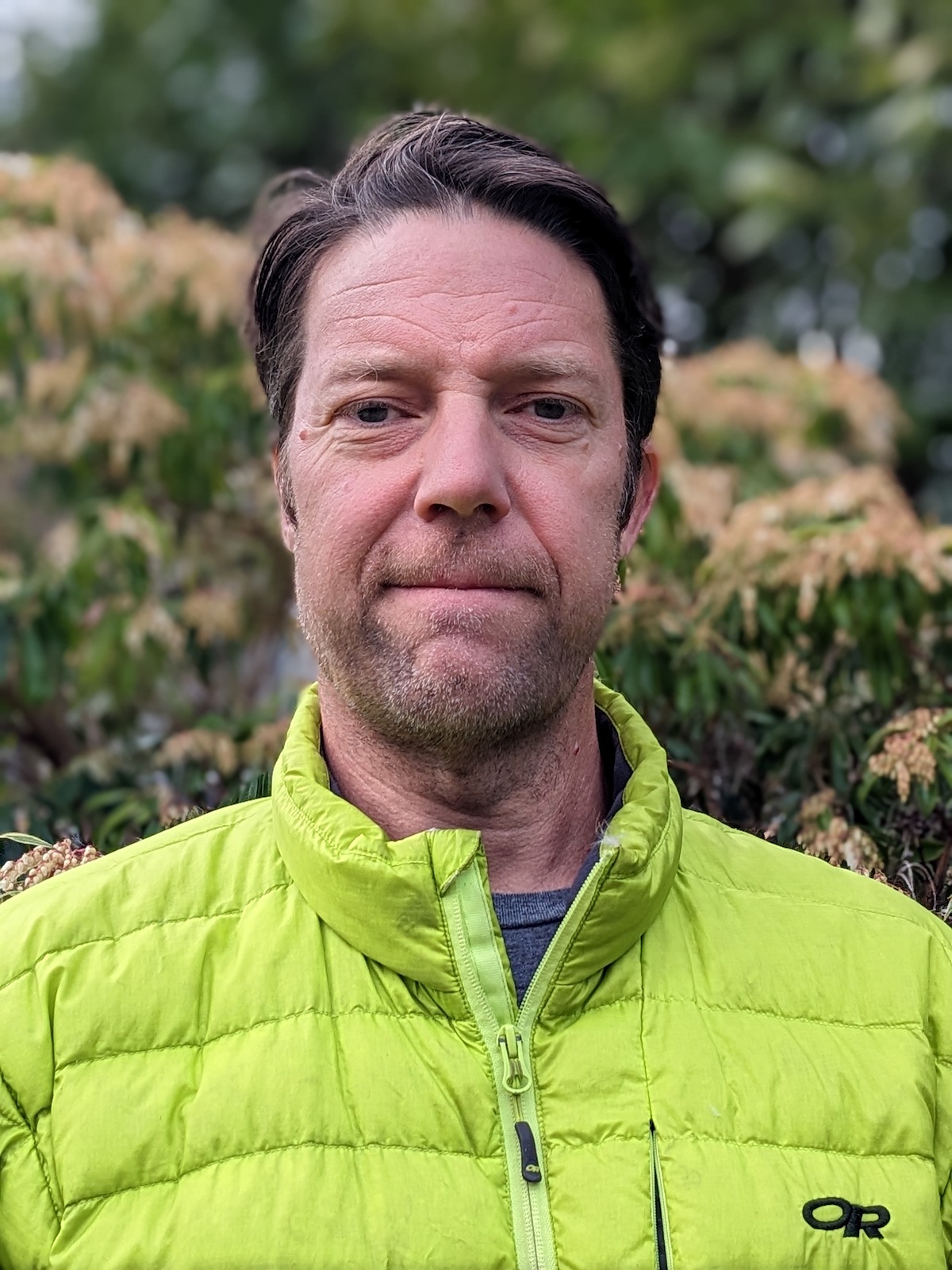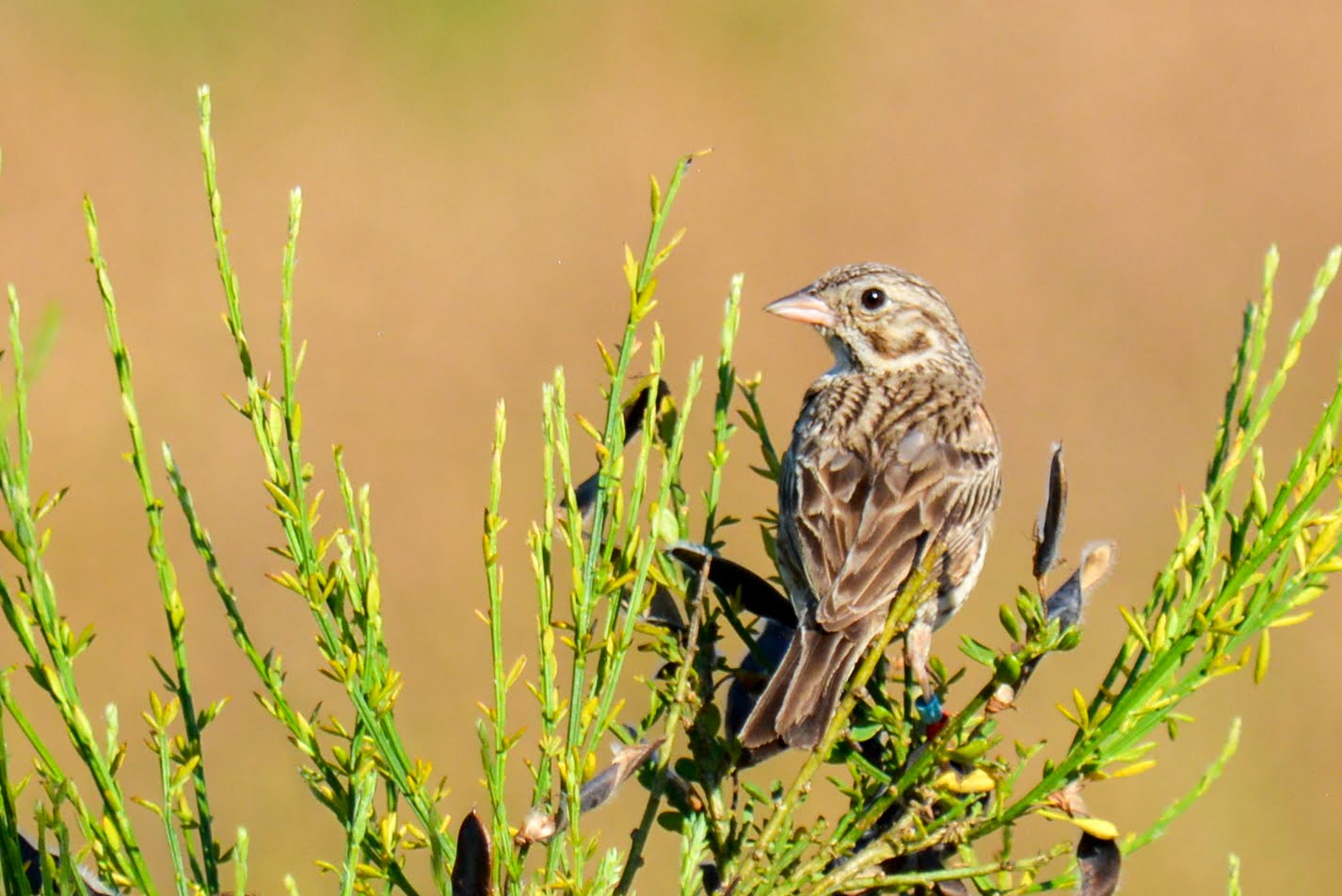
© Karla Kelly
Thank you to Dan Calvert for submitting this post. Dan is the Program Coordinator for the Joint Base Lewis McChord Sentinel Landscape Partnership Program–one of ten Sentinel Landscape Partnerships across the country. The JBLM Partnership was awarded a REPI Challenge Grant to implement conservation projects around the base, many of which align with the goals of Pacific Birds Oak and Prairie Conservation Priority.
JBLM Program is Part of a Larger Landscape Effort
When you think about the Department of Defense (DoD), leadership and innovation related to habitat conservation might not jump to mind–but it’s worth a deeper dive. Throughout the country and in U.S. territories around the globe, DoD installations often represent islands of intact habitat in an otherwise developing landscape. The creation of military installations essentially froze habitat in place and they can serve as critical habitat and species refugia.
Joint Base Lewis McChord (JBLM) in Washington is a great example. Ninety percent of the remaining native oak prairie and woodlands in the Puget Sound region are found on base. It is a stronghold for multiple ESA-listed prairie species, including but not limited to Taylor’s checkerspot butterfly (Euphydryas editha taylori), Mazama pocket gopher (Thomomys mazama sp), the Streaked Horned Lark (Eremophila alpestris strigata), and the Oregon Vesper Sparrow (Pooecetes gramineus affinis). Prairie loss is driven by development and changes in land management, especially the lack indigenous prescribed fire over the last 150 years.
Efforts to restore and protect sensitive species and limit incompatible development around military installations was the genesis for the Sentinel Landscape Partnership Program–coalitions of federal agencies, state and local governments, and non-governmental organizations working with private landowners to advance sustainable land management practices around military installations and ranges. Founded in 2013 by the U.S. Department of Defense, Department of Agriculture, and Department of the Interior, the partnership’s mission is to strengthen military readiness, conserve natural resources, bolster agricultural and forestry economies, and increase climate change resilience. There are currently ten Sentinel Landscapes, with several more likely be announced later this year.
The JBLM Sentinel Landscape Program brings together more than 30 partners, and two Native American tribes, to advance strategic conservation strategies. Program goals include restoring and managing prairie and oak woodlands, recovering prairie-oak species, protecting working landscapes, and supporting regional agricultural viability. Much of this work is supported by the DoD’s Readiness and Environmental Protection Integration (REPI) Program which facilitates partnership driven conservation around military installations. By agreeing to sit at the Sentinel Landscape table, these groups are committing to long-term stewardship of social and ecological systems.
The JBLM Sentinel Landscape Program was one of 13 awardees of the 2022 REPI Challenge–a nationwide competition designed to support innovative projects grounded in strong partnerships. This was a big win for the prairie and oak woodlands and working landscapes in western Washington and illustrates DoD’s commitment to supporting collaborative conservation.
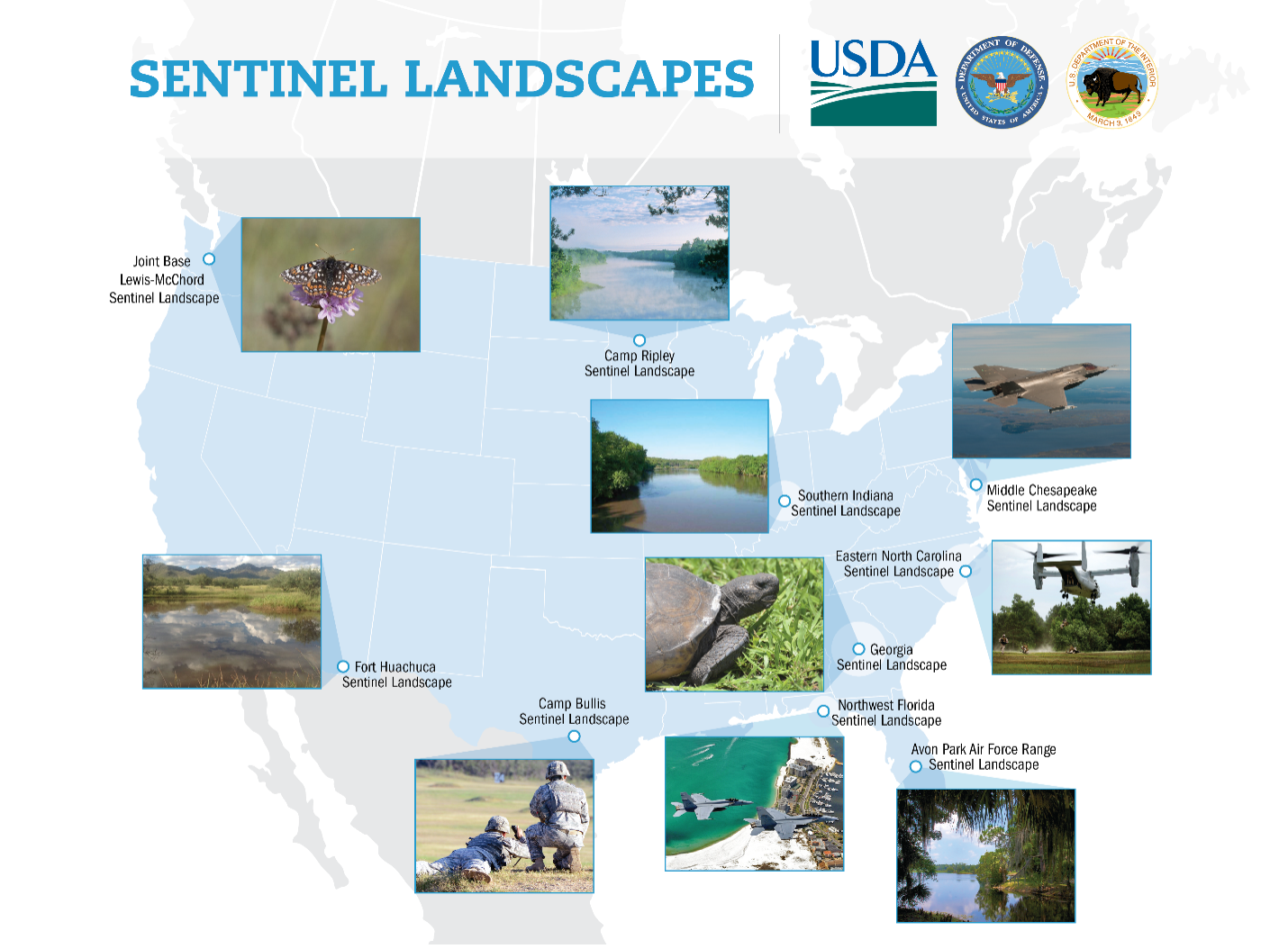
On the Ground – Restoration, Jobs and Outreach
The REPI award to the JBLM partnership is based on a record of success. Over the next few years, the award will fund portions of at least 12 jobs while catalyzing innovative conservation projects by:
- Enhancing regional coordination and capacity for prairie habitat and species recovery planning and implementation.
- Supporting the Thurston Conservation District and Washington State University Extension to conduct landowner outreach about incentives and conservation easement opportunities, and provide technical assistance to farmers. A growing body of research demonstrates working landscapes and prairie habitat can thrive together.
- Building Tribal capacity to manage and restore prairie landscapes. A co-management workshop will focus on stewardship of prairie-oak habitats and accelerating workforce development.
- Supporting the Sustainability in Prisons Project, which brings nature and science into prisons. It is the main provider of captive-reared ESA listed prairie species such as Taylor’s checkerspot butterfly and multiple plant species. The program empowers incarcerated individuals and helps them gain valuable job skills.
Unique Skill Sets Needed for Prairie Conservation Work
Restoring prairie landscapes requires a unique combination of skills and resources. Fortunately, four partners, the Center for Natural Lands Management, Ecostudies Institute, the Washington Department of Fish and Wildlife, and Washington Department of Natural Resources bring significant expertise in this arena. They have been refining their techniques to do things like removing Scotch broom, often through the use of prescribed fire, to restore prairie ecosystems and support recovery of ESA listed species.
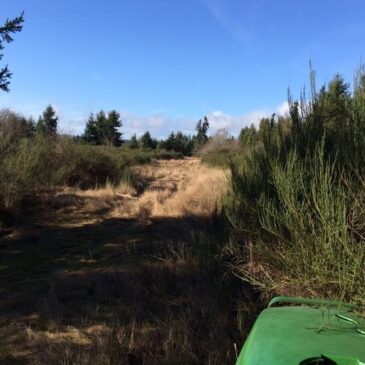
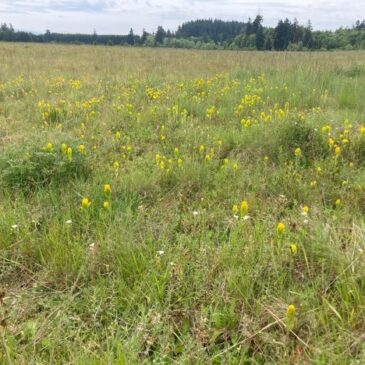
Before and after images of a site that went from a Scotch broom forest to a prairie landscape. Restoration work has played a key role in the delisting of Golden paintbrush (Castilleja levisecta), shown in photo.
Photos © Sanders Freed, Center for Natural Lands Management
Looking Ahead
The REPI Challenge award is a statement of commitment by DoD to support working landscapes and the restoration and maintenance of prairie and oak woodlands. Climate change is making this, and other restoration work, more complex. In response the DoD is actively incorporating climate resilience planning in nearly every facet of its operations. These kinds of landscape scale conservation require dynamic partnerships. Be on the lookout for more good work to come from the JBLM Sentinel Landscape and other DoD supported conservation efforts.
